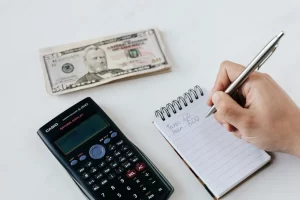Silver’s price has risen sharply in recent weeks, reaching its highest point since 2013. Let’s investigate the factors that have lured investors into the precious metals exchange and are causing its recent dramatic price fluctuations.
Gold has always been regarded as a shelter for investors, particularly during times of economic uncertainty when other asset classes, such as bonds and stocks, give low or negative returns. However, silver has risen by far more significant amounts in the same time period.
The spot price of silver hit $29 per ounce. Since then, it has dropped marginally but is still worth over $27 an ounce. Since the precious metals rally began in earnest in the middle of July, prices have increased by about 39%, taking it to a new all-time high not seen in seven years. In most cases, the best silver IRA companies around the globe are earning big bucks.
Why Do Investors Prefer Silver?
Investment in physical silver is a common strategy among investors. The purity of investment-grade silver bullion is typically stated as 99.9% or higher. Silver bars are available to buyers in increments of 1 ounce up to 100 ounces. New silver investors might consider purchasing lower-weight bars, which may be more liquid in a bear market. Silver investment companies have rolled out new regulations that can help you make better financial decisions.
There are also junk silver coins available for purchase by investors. Before 1965, the silver content of all U.S. Mint dimes, quarters, and half dollars was quite high. Though many of these coins aren’t worth much on their own, the silver they contain gives them value.
One way to invest in silver is by purchasing silver coins, but investors can also do so by purchasing silver futures contracts. Exchange-traded silver futures contracts are agreements between two parties whereby one party undertakes to purchase silver in a standard quantity at an agreed-upon price for delivery at a future date. When trading silver futures, one contract is equal to 5,000 troy ounces. Investors widely use silver futures contracts as a tool for speculation and portfolio protection. Futures contracts can be traded at any time before they expire, providing investors with direct exposure to actual silver without the need for delivery or storage.
Commodity Exchange Traded Funds and Stocks in Silver
Silver stocks and ETFs provide numerous opportunities for investors to speculate on the metal in a more roundabout route.
Shares in silver mining companies are available for purchase by investors. As the price of silver rises, so do the profits of silver miners.
Silver streaming or royalty stocks are other options for investors. They don’t engage in direct silver mining. Instead, they invest in a mining operation and share in the earnings.
Silver investors can now choose from different silver exchange-traded notes (ETNs), exchange-traded funds (ETFs), and traditional stock investments.
Exchange-Traded Funds (ETFs) focused on silver typically hold various assets related to silver, including shares of silver investment companies, bullion, and futures contracts.
ETNs, or exchange-traded notes, are a type of bond that combines features of stocks and bonds. Covered Call can receive a monthly payout through ETN, an exchange-traded note that follows the price of silver.
The Hybrid Nature of Silver
Gold is a precious metal that can be used as a hedge against inflation. It’s also an industrial metal that can be put to a wide variety of uses. In 2020, silver prices hit a multi-year low. Recent weakness aside, it’s still well above its lows of 2014 and 2019, and it’s making higher lows.
The ratio of gold to silver rose over 110, which occurs only once every 100 years or so. Now, silver prices have skyrocketed. If gold were to retreat, silver would logically need to take a break and correct slightly as well.
The ratio of gold to silver is in much better shape currently. That works out to an 80:1 ratio. This is a far cry from the extremes that occurred then. Silver has always seemed like a good deal when the ratio is 80:1. Going back to the 1970s, there have only been a few instances where silver was less expensive than gold at a ratio of 80:1.
Industrial Use
Silver’s additional benefit in the industrial sector resulted from Brewin Dolphin’s brighter forecast for the global economy.
Electronics, medicine, and solar power meet more than half of the demand for silver. Investors want to join in the cyclical recovery of the economy, firms, and businesses and want to have some suspicious hedges in place to be cautious against all the risks. Therefore, silver, with its positive correlation to gold, is a unique mix for them.
Stable Investment
Silver tends to move in sync with the economy. This is primarily attributable to silver’s widespread industrial uses, the same factors that make silver a more stable investment. The price of silver falls due to a slowing economy since fewer industrial users mean lower demand for the metal.
Final Word
Playing silver now isn’t only a tactical move; it’s also a strategic one. You must approach the best silver IRA companies to get accustomed to it and learn new strategies for a better financial outcome.











